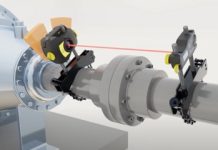In this era of AI and automation, many tasks are done by robots instead of humans, like manufacturing, making images, creating articles, waiters work and much more.
But as good as their work is, these robots are expensive. Hence, many businesses cannot support such expensive robots. But don’t worry, among these expensive robots, there is also a lower-cost robot named Collaborative robot or known as cobots.
Definition of cobots: So collaborative robots are a lower-cost alternative to industrial robots. Cobots are safe, interactive and user-friendly. The only difference between cobots and robots is that cobots need human interaction to work whereas robots do not need much human interaction to do their work.
Hence, they can work safely with humans because there are sensors inside those cobots due to which they have the ability of feel. If there is any fault inside the cobots, then they will automatically go into the “safe mode” but the robots will continue their work and can hurt humans.
part 1. History of cobots
Introduction of Cobots (2008):
In 2008, the first commercial cobot, the Universal Robots UR5, was introduced by a Danish company called Universal Robots. This lightweight robot had built-in safety features, such as force sensing and collision detection, allowing it to work safely alongside humans without the need for traditional safety barriers.
At present, ABB, KUKA, FANUC, YASKAWA and other brands have also successively launched corresponding brands of collaborative robots. Nowadays, collaborative robots are basically composed of machine arms, sensors, teach pendants and other accessories.
Part 2. The benefits of using cobots
- Increased productivity: Cobots are designed to work together with humans. Cobots perform repetitive, boring, and physically demanding tasks so that humans can focus on complex and problem-solving tasks.
Cobots have the ability to shorten the cycle time, due to which they can perform the task faster than humans. For this reason, cobots increased productivity.
- Low-priced and compact: Cobots are low in price compared to robots, and you can use them anyway you want; they don’t take up too much space.
- Installing and programming: Is it easy to install and program the cobots? Yes, cobots are designed to be easier to install and program by anyone beacuse that have sensational programming interface which is easy to use.
Even if you have minimal programming knowledge, you can easily install or program cobots because the sensational programming interface of cobots is user-friendly, in which you can give physical guidelines to the cobots with the help of a drag-and-drop menu.
- Flexibility and adaptability: Cobots are lightweight and portable. Hence, they can be taken to any place and can be reprogrammed for new work easily. Cobots can help businesses do new operations because they have the ability to adopt new operations easily.
- Consistent and precise: These cobots are designed to perform a task repetitively and accurately because they have sensors, actuators, and control systems installed inside them that help them to perform a task consistently and accurately.
- Improve ergonomics: The cobots are designed with engonimics mindset due to which they can perform starin and strenuous tasks.
Cobots can improve the environment and decrease the chances of worker injuries because the cobots will work on the same task repeatedly and reduce the physical starin on the worker’s. This can have a great impact on the worker’s health.
- Enhanced safety: Cobots are known to be a symbol of their safety because they have sensors installed in them that can detect humans. If a human comes near the cobots, they slow down or stop themselves, and due to this, they can prevent accidents in the workplace.
The emergency stop function is also present inside Cobots. If, in any situation, you want to stop the cobot, then there are emergency stop buttons or switches available. By pressing them, you can stop the cobot.
Part 3. Comparison of cobots with traditional industrial robots
- Definition: So cobots work with humans and traditional industrial robots typically work alone. Cobots are designed for collaborative tasks and traditional interested robots are designed for heavy tasks.
- Safety: Cobots have safety features that prevent accidents in the workplace because they have sensors that slow down or stop when a human comes near them.
There are no such safety features in traditional industrial robots, and for this reason, if you want to be safe from accidents, you should not get too close to them.
- Programming and ease of use: Cobots does not require much programming knowledge because its sensational programming interface is user-friendly, and you can give physical guidelines to Cobots with the help of a drag-and-drop menu.
You have to be specialized in programming to program the traditional industrial robots because programming languages and offline programming are required to program these robots.
- Flexibility and adaptability: Cobots are known for their flexibility and adaptability because they are very easy to reprogram. On the other hand, traditional industrial robots require a lot of effort to reprogram them so that they can perform new operations.
- Payload and speed: Cobots are designed for lower-loaded tasks, whereas traditional industry robots are designed for heavy-loaded tasks. Cobots are slow compared to traditional industrial robots.
- Applications and industry suitability: Cobots require human intervention to perform tasks such as assembling, picking and placing, packaging, and much more. Traditional industrial robots are designed for heavy-duty tasks requiring high-speed automation or for tasks that do not require human collaboration.
Part 4. Conclusion
In conclusion, in the era of automation, the birth of cobots can take many businesses towards success because they are affordable, and compared to traditional industrial robots, they are flexible, adaptable, and easy to use, due to which the business can reprogram the cobots to the new operations easily without being specialized in the programming field.













